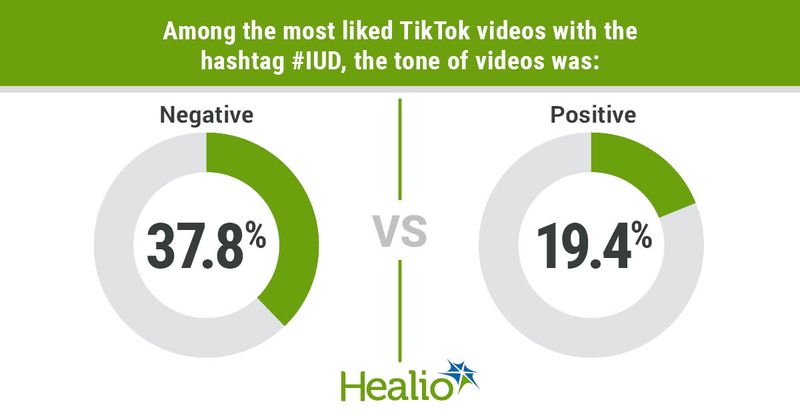Many TikTok videos present negative views of IUDs, distrust of health care professionals
Click Here to Manage Email Alerts
Among the top content with the hashtag #IUD on TikTok, more videos were negative about IUDs than positive, and more than one in four discussed distrust of medical professionals, according to data published in Obstetrics & Gynecology.
“As a millennial who uses TikTok, I started to see these videos about negative IUD experiences on my own For You page,” Jenny Wu, MD, an OB/GYN resident at Duke University Health System in North Carolina, told Healio. “In my clinical practice as an OB/GYN, I also talked to patients who were not interested in getting the IUD because of what they saw online. We know that young people are increasingly turning to TikTok for their health information, and we wanted to understand what they were seeing.”

Wu and colleagues used a web-scraping app to extract information from the 100 most liked TikTok videos with the tag #IUD. For each video, the researchers used a modified 5-point DISCERN scale to assess information quality and the Patient Education Materials Assessment Tool (PEMAT) to assess understandability and actionability.
Video information
Cumulatively, the 100 videos assessed garnered 471 million views, 32 million likes and 1 million shares. Two videos were excluded from analyses because they did not use English.
Most content creators self-identified as female (88.8%) and were from the United States (89.8%). Slightly more than one-third of content creators (36.7%) were health care professionals.
The most common video topics were personal patient experiences with IUD placement and removal (31.6%), educational information (29.6%) and humorous content (24.5%).
Attitudes, accuracy of video creators
Negative tone was more common than positive tone (37.8% vs. 19.4%); 25 (80.6%) of the 31 videos on personal experiences were negative. Almost all (96.8%) of the videos on patient experiences with placement and removal discussed pain and negative side effects.
Content creators discussed distrust of health care professionals in 27.6% of videos.

“It was surprising how overwhelmingly negative the most popular videos are,” Wu said. “If I were a patient and only relied on TikTok videos to learn about IUDs, I might be scared away! I worry about the distrust that patients have of gynecologists, as well as misinformation about what we can and can’t offer during a clinic procedure.”
About half (50.9%) of the 53 videos presenting scientific claims were highly accurate, whereas 18.8% were moderately accurate, 18.8% were moderately inaccurate and 5.6% were highly inaccurate, according to the researchers.
Videos scored an average of 1.2 out of 5 on DISCERN. On the PEMAT, videos averaged 73.8% in understandability and 17.7% in actionability.
“As health care professionals, we should understand what is out there online and how we can talk to patients about what to expect, as well as the many safe options for pain management we can offer during an IUD procedure,” Wu said. “I preemptively offer options for pain management during an IUD because it is hard for patients to advocate for that. There is also a space for health care professionals to be ‘influencers’ in this space.”

